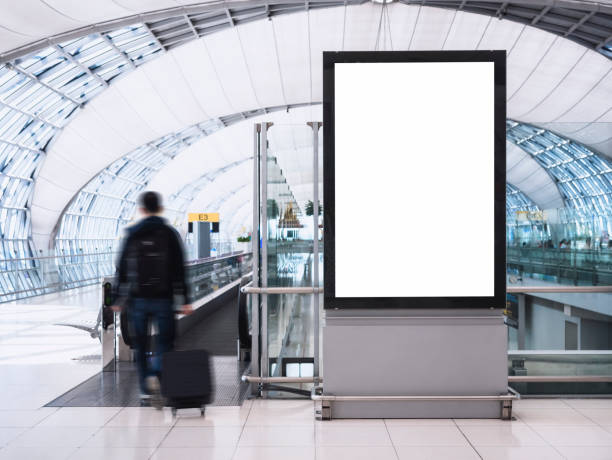
Introduction:
Airport advertising has come a long way since its inception, evolving from static billboards and posters to dynamic digital screens and interactive displays. As airports have become bustling commercial hubs, advertisers have recognized the immense potential of reaching a captive audience of travellers. In this blog post, we'll explore the fascinating journey of airport advertising and how it has transformed into a sophisticated and engaging medium for brands to connect with their audience.
Early Days: Static Billboards and Posters
In the early days of airport advertising, static billboards and posters adorned the terminals, showcasing brands and products to travellers as they moved through the airport. These ads were effective but lacked the dynamic appeal of modern advertising.
Introduction of Lighted Signs
With advancements in technology, lighted signs and illuminated displays became popular, adding a touch of vibrancy to airport advertising. These eye-catching displays were an innovative way to capture travellers' attention.
The Rise of Digital Screens
The advent of digital screens revolutionised airport advertising, enabling brands to showcase high-definition videos and animations. Digital screens provided a platform for dynamic and captivating advertisements that made a lasting impact on travellers.
Interactive Advertising
With the integration of touch-screen technology, airports embraced interactive advertising. Travellers could now engage with ads, access information, and participate in interactive games, creating a memorable and immersive experience.
Personalised Advertising
Airport advertisers tapped into the power of data analytics to personalise advertisements based on traveller demographics and behaviour. This personalised approach ensured that ads resonated with specific audiences, enhancing their effectiveness.
Mobile Integration
The rise of smartphones opened up new opportunities for airport advertising. Brands incorporated QR codes and NFC technology, allowing travellers to access additional content or discounts by scanning their devices.
Augmented Reality (AR) and Virtual Reality (VR)
In recent years, AR and VR have transformed airport advertising, offering travellers unique and interactive experiences. Brands have utilised AR/VR to showcase products virtually or provide immersive storytelling.
Targeted and Contextual Advertising
Through Wi-Fi and beacon technology, airports can deliver targeted and contextual advertisements to travellers based on their location and preferences. This ensures that ads are relevant and timely.
Environmental-Friendly Advertising
Sustainability has become a significant consideration in airport advertising. Eco-friendly digital screens and LED lighting have been adopted to reduce environmental impact.
Integration with Social Media
Airport advertising now seamlessly integrates with social media platforms, encouraging travellers to share their experiences and engage with brands online.
Conclusion:
The evolution of airport advertising has been a remarkable journey, embracing technological advancements and adapting to the changing needs of brands and travellers. From static billboards to dynamic digital screens and interactive experiences, airport advertising has become a powerful and engaging medium for brands to connect with their audience. As technology continues to advance, we can expect airport advertising to push boundaries, providing travellers with innovative and personalized experiences while amplifying brand messaging on a global scale.